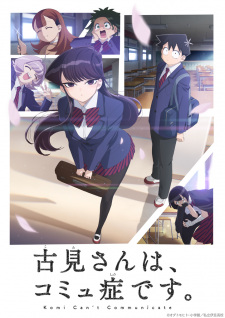Coming back from our 6 week hiatus, I felt it was only right to talk about one of the most popular airing anime of the past season. In the Fall 2021 season, the largely beloved manga “Komi-san wa, Comyushou desu” (or Komi Can’t Communicate) received its first anime adaptation.

The series itself is a light hearted slice of life focused on the interactions and struggles of the protagonist, Komi, who has a communication disorder that makes her unable to properly verbally communicate with other people. However, despite this setback, she still manages to be adored by her schoolmates and makes friends.
Komi has a goal: To make 100 friends. While generally simple, this goal has been a struggle for her due to her communication disorder. This, in and of itself, presents a message to the audience that is highlighted at the beginning of each episode, that is, that just because people are unable to socialize does not mean that they do not want to., but rather it is difficult for them to do so.
At the beginning of the show, Komi makes one friend, Tadano, who manages to understand her through writing, when nobody else in the class manages to do so. Tadano, despite fitting the normal main character stereotype, manages to do what almost nobody else could, understand Komi. It is because of this that they are able to foil one another, and become the main pair of focus in the series.

The topics of social anxiety, and to some extent personality quirks and disabilities, are prevalent to the series. While due to the nature of the medium, these issues are glorified for the sake of humor and tone, this also reflects a message regarding how these people not only wish to be treated, but also how the world has changed with regard to its views.
Social anxiety, to some extent, is not all that uncommon. People suffer to various degrees with social anxiety, often in significantly different ways. For instance, some people might be nervous around other people, or maybe just a large group of strangers. While there is an obvious difference in degree of both situations, both still classify as social anxiety.
Komi-san projects these traits, among other quirks, largely as personality traits that are accepted by not only the cast, but by extension the audience. By seeing these traits in media, personality quirks and the topic of mental health become more normalized, allowing for social progression toward what is generally a more accepting environment.
Personally, having read the manga to some extent, I appreciate the transition of the artistic stylization into animation. Additionally, with Komi-san being one of the larger romance slice of life manga running, the adaptation itself had a lot of hype and brought even more people to the series, especially with it being one of the last of the popular 3/4 series to receive one.
Solid 7.5/10 give or take .5 go watch it for some wholesome content (might want to watch out for some weirdly sus content too)